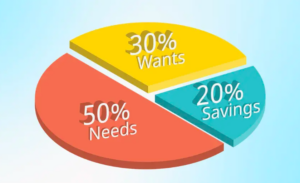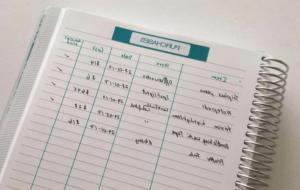Introduction: Embracing Frugality
Frugal living holds immense appeal, especially in a world where the cost of living is steadily rising. It’s not about cutting out life’s pleasures or denying yourself the things you want; it’s about practicing intentional spending and discovering how to get the most value out of every dollar. When you can prioritize needs over wants and align your choices with meaningful goals, saving more and spending less becomes second nature. Throughout this blog, we’ll explore practical, manageable ways to adopt a frugal mindset that not only protects your wallet but can also lead to financial freedom.
Understanding Your Finances
The foundation of any frugal lifestyle is understanding your financial situation inside and out. Without clarity, it’s easy to overspend or lose track of where your hard-earned money goes. Creating a budget and monitoring your expenses allows you to map out where every dollar is spent, ensuring you stay in control. To start, divide your income into fixed costs (like rent and utilities) and discretionary spending (non-essentials such as dining out). Consider tools and apps that track your spending habits over time, so you can refine how you allocate funds. When you truly understand your financial habits, you’ll naturally start making better decisions and uncover areas where savings can multiply.
Smart Shopping Strategies
Shopping with a purpose is key to maintaining a frugal lifestyle. By adopting smarter shopping habits, you can trim costs without sacrificing quality. Comparison shopping is a game-changer—whether it’s comparing prices on groceries or deal-hunting for clothes, taking a few minutes to shop around often pays off. Coupons, discount apps, and cash-back programs also add significant value over time. Buying in bulk for non-perishable items like cleaning supplies is another excellent way to save. Most importantly, enter any store—physical or virtual—with a plan. Creating a shopping list reduces impulsive purchases, ensuring you only buy what you truly need.
Reducing Household Expenses
Household bills often account for a large portion of monthly expenses, but there are plenty of ways to reduce these costs significantly. Start by auditing your utility habits—small adjustments like turning off lights, unplugging appliances, or switching to energy-efficient LED bulbs can make a big difference on your electricity bill. Consider installing low-flow fixtures in your bathrooms or using a rain barrel to cut water usage. For long-term savings, energy-efficient appliances and minor home upgrades like insulation improve efficiency and reduce utility costs. Housing expenses are another factor—downsizing, refinancing your mortgage, or even renting out a spare room can provide relief.
Transportation Savings
Transportation costs can easily spiral, especially with rising fuel prices and maintenance costs. If possible, explore alternatives like biking or walking, which are not only cost-free but great for your health. Public transportation can also save money and eliminate the stress of parking. If driving is unavoidable, carpooling is a great way to split costs while conserving resources. Additionally, keeping up with regular car maintenance, such as oil changes and tire rotations, helps prevent costly repairs down the road. Lowering your insurance rates through comparison shopping or bundling policies is another smart way to save.
Entertainment and Leisure on a Budget
Frugal living does not mean eliminating fun—it’s about finding joy in cost-effective and meaningful ways. Many communities offer free or low-cost events that provide entertainment without breaking the bank. Parks, hiking trails, and public beaches are ideal spaces for outdoor fun. Libraries can be wonderful resources for movies, books, and even workshops. Hosting at-home game nights, potlucks, or movie marathons with friends is another fantastic way to relax and connect. Remember, the richest moments often come from experiences, not material goods. Prioritize quality time over high expenses.
Cooking at Home and Meal Planning
One of the simplest yet impactful steps to saving more is cooking at home. Preparing your meals not only costs far less than dining out, but it also allows you to control portion sizes and ingredients. Meal planning is a crucial strategy—take a day each week to map out your meals and create a precise grocery list based on what you already have at home. Cooking in bulk and freezing portions can save time and money. Getting creative with leftovers is another easy way to reduce food waste while stretching your grocery budget further.
Debt Management and Reduction
Debt can feel like one of the biggest roadblocks to a frugal lifestyle, but proper management can help you break free over time. Consider strategies like the debt snowball method, where you focus on paying off smaller debts first, or the debt avalanche method, which prioritizes high-interest loans. If possible, negotiate with lenders to reduce interest rates, consolidate debts, or work out repayment plans. Most importantly, avoid incurring unnecessary new debt by saving for planned expenses. Managing and reducing your debt may take time, but the effort pays off with improved financial stability and peace of mind.
DIY and Creative Solutions
DIY projects are a frugal living staple. By doing things yourself, you can avoid high service fees and turn ordinary items into something special. Whether it’s fixing a leaky faucet, creating budget-friendly home decor, or crafting unique gifts, there’s a satisfying sense of achievement in learning new skills. Everyday repairs, like hemming pants or mending furniture, are often simple enough to do yourself with some quick tutorials and patience. Beyond saving money, living life as a DIY enthusiast often ignites creativity and reduces waste, making it a win-win for you and the environment.
A Sustainable Frugal Lifestyle
Frugal living is more than a way to save money—it’s an empowering lifestyle that promotes mindfulness, resourcefulness, and long-term stability. Even small, incremental changes in spending habits can pave the way for significant savings and new opportunities. Remember, frugality isn’t about sacrifice; it’s about intentionality. By adopting some of these tips, tailoring them to fit your needs, and remaining consistent, you can pave the way to financial freedom. Are you ready to make frugal living part of your everyday life? Start today and see the changes unfold—because every little bit truly counts.




